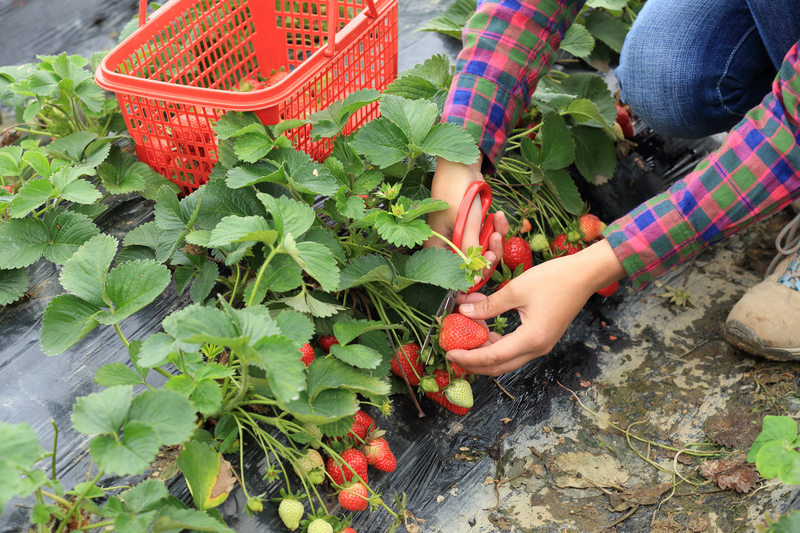DIY Approaches for Effectively Removing Tree Stumps: A Comprehensive Guide
Tree stumps can become unsightly obstacles in your yard, hindering landscaping plans and even attracting pests. While hiring professionals is the fastest route to a stump-free lawn, DIY tree stump removal can save you money and provide great satisfaction. In this detailed article, you'll discover multiple effective methods to remove tree stumps yourself, including step-by-step guides, safety precautions, and essential tips for success.

Why Remove Tree Stumps?
Before diving into DIY stump removal techniques, it's important to understand the benefits of removing tree stumps from your property:
- Enhanced Aesthetics: A stump-free yard looks neater and offers more landscaping options.
- Improved Safety: Old tree stumps can be hazardous, causing trips and falls.
- Pest Prevention: Rotting stumps attract insects, termites, and other pests.
- Space Utilization: Removing stumps opens up outdoor space for entertaining, gardening, or playgrounds.
How to Effectively Remove Tree Stumps Yourself
There are several DIY approaches to removing tree stumps, ranging from manual labor to leveraging chemical or natural processes. The best method depends on the stump's size, your available tools, time frame, and your comfort with physical work.
Safety First: Precautions Before Stump Removal
Before starting any stump removal project, always:
- Wear protective clothing, gloves, eye protection, and sturdy boots.
- Check for underground utilities with your local utility company before digging.
- Consider the environmental impact and local regulations regarding stump removal or burning.
- Have a first-aid kit nearby.
1. Manual Removal: Digging Out Tree Stumps
Manual stump removal is one of the oldest DIY methods for stump elimination. It's best suited for small- to medium-sized stumps with manageable root systems.
Tools You'll Need
- Shovel
- Mattock or digging bar
- Bow saw or pruning saw
- Axe (optional, for larger roots)
- Sturdy gloves
Step-by-Step Guide to Manual Stump Removal
- Clear the Area: Remove rocks and debris from around the stump's base.
- Dig Around the Stump: Use a shovel to dig a trench, exposing the roots as much as possible.
- Sever Major Roots: Use a mattock, saw, or axe to cut through thick roots. Pull out smaller roots by hand or with the shovel.
- Loosen the Stump: Work the stump back and forth to loosen it. Use leverage with your shovel or digging bar.
- Remove the Stump: Once free, lift the stump from the ground. For stubborn stumps, repeat cutting and loosening as needed.
- Fill the Hole: Backfill the hole with soil. Compact and level the ground as desired.
Tips:
- This approach is most effective for stumps under 12 inches in diameter.
- Wet soil before digging to make the process easier.
2. Chemical Stump Removal: Speeding Up Natural Decay
Chemical removal is a popular DIY solution for fast tree stump decomposition when manual methods are too labor-intensive. Commercially available stump removal chemicals, usually containing potassium nitrate, accelerate the rotting process.
What You'll Need
- Drill with a large bit (at least 1-inch diameter)
- Stump removal chemical or potassium nitrate
- Watering can or bucket
- Plastic tarp (optional, for moisture retention)
- Mulch or compost (optional)
How to Remove a Tree Stump Using Chemicals
- Drill Holes: Drill deep holes across the top of the stump, spacing them about 3-4 inches apart. Drill some angled holes into the roots as well.
- Add the Chemical: Pour stump removal chemical or potassium nitrate into each hole, following package instructions.
- Add Water: Fill the holes with water to help the chemical absorb and begin the decay process.
- Cover and Wait: Cover the stump with a plastic tarp to retain moisture and speed up decomposition. Add mulch or compost on top if desired.
- Check Progress: After 4-6 weeks, the stump should be noticeably softer. Chop away the rotted wood with an axe or shovel, repeating the process as needed until the stump is gone.
Note:
- This method is best for older, well-seasoned stumps rather than freshly cut ones.
- Always use chemicals according to manufacturer's guidelines.
- Keep children and pets away from treated areas.
- Not suited for those seeking immediate results.
3. Burning: Using Fire to Remove Tree Stumps
Burning is another common DIY approach for removing tree stumps, especially if the stump is dry and the area allows open fire. Always check local regulations and obtain necessary permits before proceeding.
What You'll Need
- Drill with a large bit
- Kerosene or fuel oil (never gasoline)
- Matches or lighter
- Metal bucket (to cover) or safety measures
Steps for Burning a Tree Stump
- Drill Air Holes: Drill several holes deep into the stump's top and sides for increased airflow.
- Add Fuel: Pour kerosene or fuel oil into the holes and allow it to soak in for several hours or overnight.
- Ignite the Stump: Light the stump carefully. Never use gasoline, as it is far too volatile.
- Monitor the Fire: Stay nearby to watch the burn. The stump should smolder and burn down over hours or days.
- Dispose of Ashes: When finished, remove ashes and fill the hole with soil.
Warning: Burning tree stumps can be hazardous. Ensure safety by having water or a fire extinguisher ready. Never leave the fire unattended.
4. Natural Decay: Eco-Friendly Stump Removal
If you prefer sustainable DIY tree stump removal without harsh chemicals or heavy labor, accelerate the natural decomposition process using organic materials.
What You'll Need
- Compost or manure
- High-nitrogen fertilizer
- Plastic tarp or thick mulch
Procedure for Eco-Friendly Stump Removal
- Cut the Stump Low: Use a chainsaw to trim the stump as close to ground level as possible.
- Drill Holes: Make deep holes in the surface to allow air and moisture in.
- Apply Compost or Fertilizer: Fill the holes and cover the stump with compost or a high-nitrogen fertilizer to boost microbial activity.
- Cover the Stump: Use a plastic tarp or thick mulch to retain moisture and warmth. This encourages faster decay.
- Wait and Monitor: Over 12-18 months, the stump will soften and begin to break down. Remove softened sections as they become available.
This method is safe, non-toxic, and improves soil quality but is not suitable for those who need a quick fix.
5. Mechanical Removal: Using a Stump Grinder
For the fastest DIY tree stump removal, consider renting a stump grinder from your local hardware or equipment rental shop. This mechanical tool can grind away stumps of nearly any size, but requires caution and proper handling.
How to Use a Stump Grinder
- Rent the Equipment: Choose the appropriate size for your stump. Include safety gear such as eye and ear protection.
- Prepare the Stump: Remove rocks and debris. Use a chainsaw to trim the stump as low as possible.
- Position the Grinder: Carefully maneuver the grinder over the stump, following the tool's instructions.
- Grind Down the Stump: Lower the blade and move it side-to-side, gradually grinding through wood until the stump is 3-6 inches below ground level.
- Backfill the Hole: Fill with soil and wood chips, then restore your landscape as needed.
Note: A stump grinder is powerful and can be dangerous. Be sure to watch tutorials, read manuals thoroughly, and keep children and pets away from the work zone.
Tips for Successful DIY Stump Removal
- Choose the Right Method: Assess your stump size, location, and desired removal speed before deciding on a technique.
- Avoid Working Alone: Enlist a friend for labor-intensive steps, especially when using heavy tools or fire.
- Be Patient: Some methods, like chemical or natural decay, require weeks or months for results.
- Practice Good Cleanup: Always fill any holes left behind to prevent hazards, and remove or compost leftover stump material or chips.

Frequently Asked Questions About DIY Tree Stump Removal
Is it better to remove a stump by hand or with chemicals?
Removing a stump by hand is effective for small to medium stumps and gives instant results, but is hard work. Chemicals suit larger stumps and reduce labor, though they take longer and require proper safety measures.
Can I use Epsom salt to remove stumps?
Yes! Epsom salt stump removal is a natural alternative that draws moisture from wood, accelerating decay. Follow a similar process as with chemical stump remover: drill holes, pour Epsom salt and water, and wait for the wood to soften over weeks.
Is burning a safe method for all stumps?
Burning stumps is not recommended in dry climates or near structures, and often requires permits. Never use gasoline and always monitor the fire closely. Consider all alternatives before choosing this method.
Do I need to remove roots as well?
Major roots should be cut and removed to prevent regrowth, but small roots usually decay naturally after the stump is gone.
Conclusion: Take Control of Your Yard with DIY Tree Stump Removal
DIY approaches for removing tree stumps empower homeowners to reclaim their yards and boost property appeal. Whether you use manual digging, chemical decay, natural methods, burning, or mechanical grinding, there's a technique suited for every situation and budget.
By choosing the right DIY tree stump removal method, following safety guidelines, and being patient throughout the process, you can achieve professional results without the hefty price tag. Remember, careful preparation and consistent effort are key to a successful, stump-free landscape.
Ready to begin? Select your preferred method and watch your yard transform--with no more unsightly tree stumps in sight!